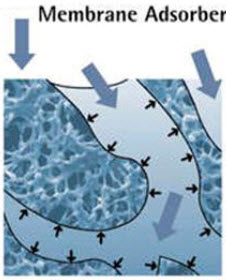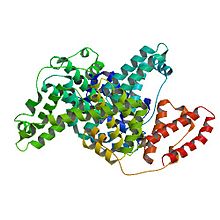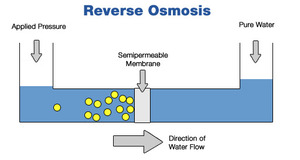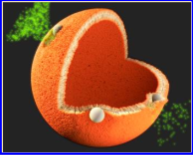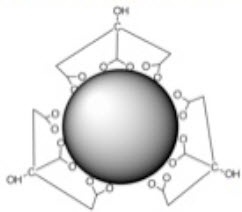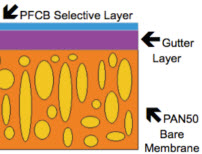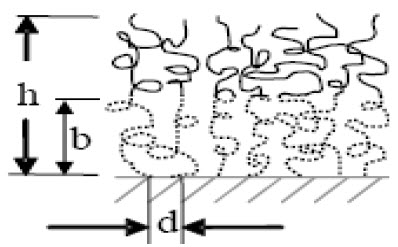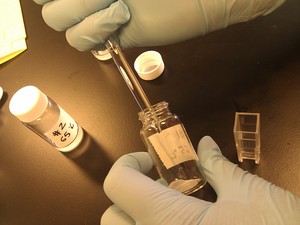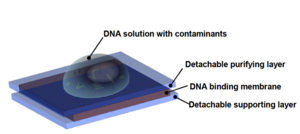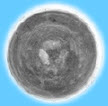Clemson University
Community for the latest research in new membrane materials.
Projects Directory
-
Advanced Membranes for Protein Chromatography
The market demand for protein therapeutics is increasing rapidly. Considering that >60% of the total bioprocess cost is due to product recovery and purification, high productivity / high resolution separation techniques are needed to meet societal demands. Membrane chromatography is one such tech...
-
Affinity and Multimodal Membranes
for Protein ChromatographyPast work has shown that regenerated cellulose (RC) membranes can be functionalized with polymer nanolayers via atom transfer radical polymerization (ATRP) to produce high capacity protein adsorbers. These functionalized membranes have shown competitive binding capacities at a drastically increased...
-
Antimicrobial, Antifouling Membranes
for Water Treatment -
Battery Separator Layers
with Grafted Separators and Thermally-Responsive Ion-TransportBattery separators are membranes that prevent the direct contact of the positive and negative terminals of a battery while allowing ion conductance and preventing electron flow. Battery performance is affected by the following separator properties: porosity, pore-size distribution, thickness value,...
-
Clemson University Chbe
Department of Chemical and Bimolecular EngineeringStrong departmental research programs exist in polymer processing, rheology, fiber and film formation, supercritical fluids, separation processes, energy, kinetics and catalysis, biosensors and biochips, and membrane applications.
-
Composite and Supported Ionic Liquid Membranes
for CO2 CaptureCarbon dioxide emissions are rising throughout the world as industrialization increases, contributing to global warming. Our goal is to reduce carbon dioxide through filtering flue gas post-combustion using membranes, which could be cheaper and more efficient than present solutions. This has the adv...
-
Coupling membranes and dendritic polymers
for advanced water purificationThis project focuses on the incorporation of dendrimers in water filtration systems. Dendrimer coatings on reverse osmosis membranes have been shown to reduce the effects fouling has on the membrane flux. The dendrimer coating needs to be removed when it becomes saturated with foulant. This projec...
-
Coupling Small-particle Adsorbents
with Membranes for Trace-contaminant Removal in Water TreatmentThe application of superfine powdered activated carbon (S-PAC) for drinking water treatment is part of recent advances in nanomaterials to develop microporous materials for adsorption. Micro/Ultrafiltration has been proposed as a means of removing S-PAC from the effluent drinking water stream, howev...
-
Design of Nanoparticle-liposome Assemblies
as Cell Membrane Analogs for Drug Delivery ApplicationsOur study describes a hydrophilic nanoparticle drug delivery system that utilizes gold nanoparticles (GNPs) with different ligands in tandem with a particle drug carrier, or phospholipid membrane. The drug delivery will be simulated using a fluorescent dye and measuring the leakage rate of the dye f...
-
Electrospun Nanofiber Mats
for Environmental Applications -
Investigating Ion-transport
and Thermal Safety in Functional Polymer SeparatorsAs the global demand for energy generation and storage grows, many novel systems are being introduced as potential solutions to the energy problem that are cost-effective, efficient, and above all, safe to use. Particularly in electrochemical systems, such as batteries and supercapacitors, thermally...
Clemson, South Carolina 29634 United States
-
Magnetically Responsive Membranes
Magnetite Incorporated Polyurethane Sponges for Use in Multiple FiltrationsThis project involves the synthesis of magnetically responsive membranes in the form of magnetite incorporated polyurethane sponges. Current filtration methods require different pore size filters for each substance. These polyurethane sponges may be used for the filtration of multiple substances by...
-
Membranes for CO2 capture and separations
Advanced membrane technologies for gas phase separation of CO2 from mixed streamsAdvanced membrane technologies for gas phase separations are a viable option for the energy efficient isolation of CO2 from fossil fuels combustion natural gas wells, and biomass gasification and water gas shift reactions for hydrogen production. Polymer membranes are particularly well suited for...
-
Membranes for Produced Water Treatment
Development of Advanced Membranes for Produced Water TreatmentProduced water (PW) is oily water that is co-produced during oil and gas exploration and production. In the United States, PW accounted for 88% of the total volume of exploration and production material brought to the surface by the oil and gas industry in 2007. The total volume of PW generated from...
-
Modeling Protein Adsorption
on Multimodal Membrane AdsorbersDeveloping an efficient method of protein purification has been one of the challenges in biopharmaceutical industry. The objective of protein purification is to capture the target protein with dynamic adsorption and the least impurities. In this research, multimodal membranes have been developed to...
-
Multilayered Membrane Assembly
Modified with Grafted Polymer Layers for DNA Preservation and StorageCurrent storage techniques have shown to be costly and unreliable in maintaining the structural integrity of DNA. This has created a need for the development of a new method for long term storage of forensic DNA. This study presents a way to address this need by creating a multi-layered membrane ass...
-
NSF Research Experiences for Undergraduates
National Science Foundation Research Experiences for Undergraduates (REU) ProgramThe Research Experiences for Undergraduates (REU) program supports active research participation by undergraduate students in any of the areas of research funded by the National Science Foundation. REU projects involve students in meaningful ways in ongoing research programs or in research projects...
-
Polyaniline Electrodes for Ultracapacitors
Polyaninline (PANI) is an excellent electrode candidate for use in electrochemical energy conversion and storage devices. Films made from this polymer exhibit high electrical conductivity that are chemically stable and easy to dope/de-dope. Potential applications of PANI polymer films include electr...
-
Regenerable membranes for desalination
Reverse osmosis (RO) and ultrafiltration (UF) membranes for desalination of seawater and brackish groundwaterReverse osmosis (RO) and nanofiltration (NF) membrane processes are finding increased use in desalination of seawater and brackish groundwater. A significant limitation to RO and NF is fouling by organic matter, scale-forming salts, or biological growth. Membrane fouling increases the energy require...

